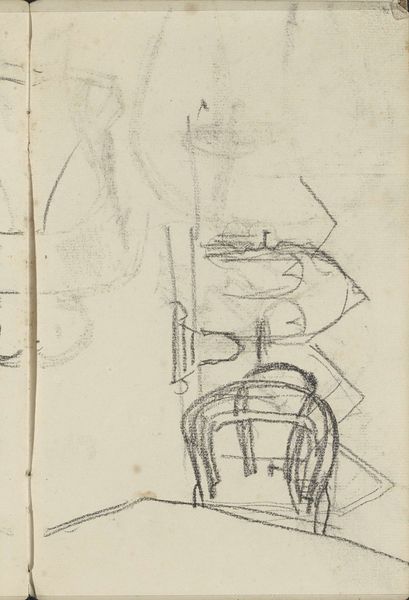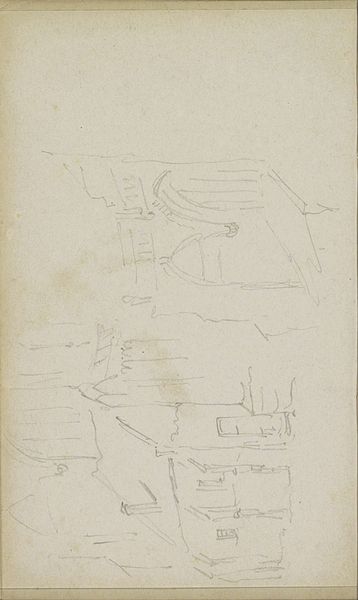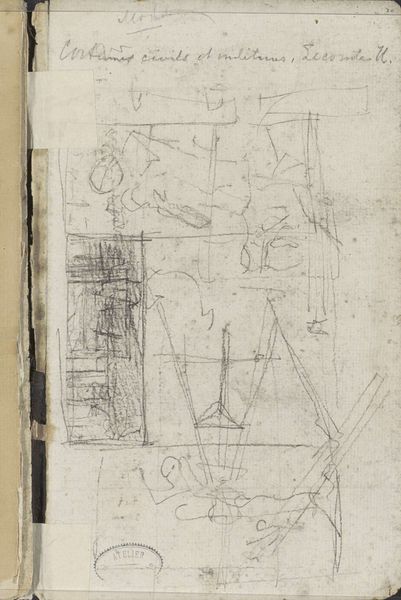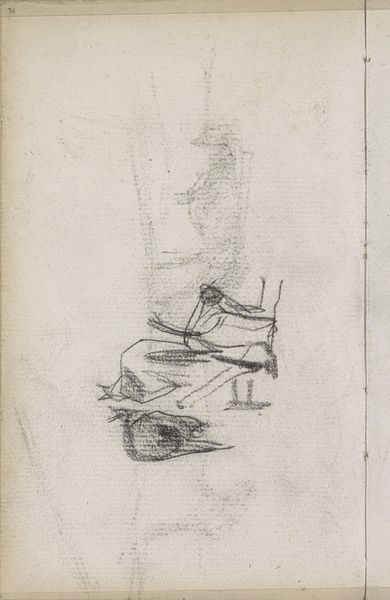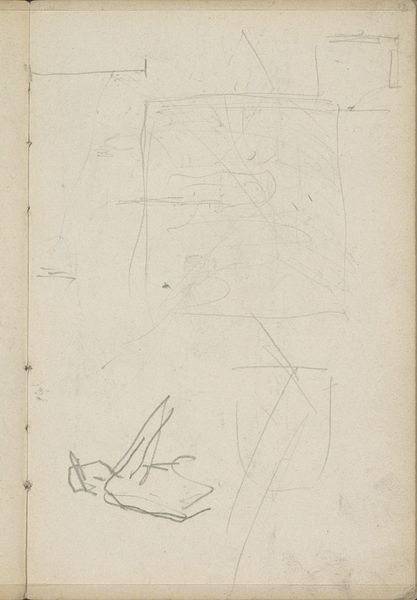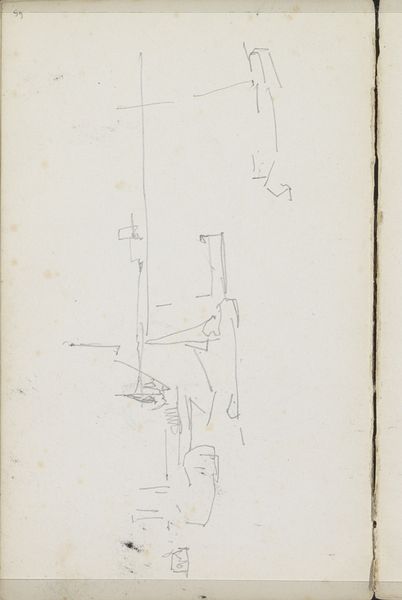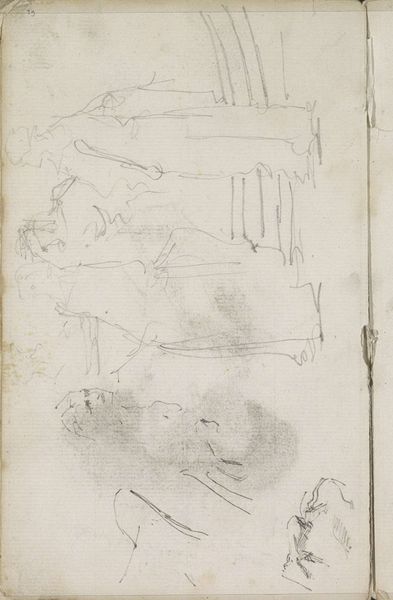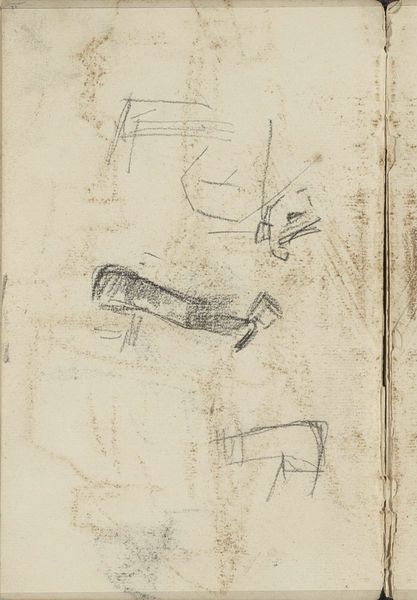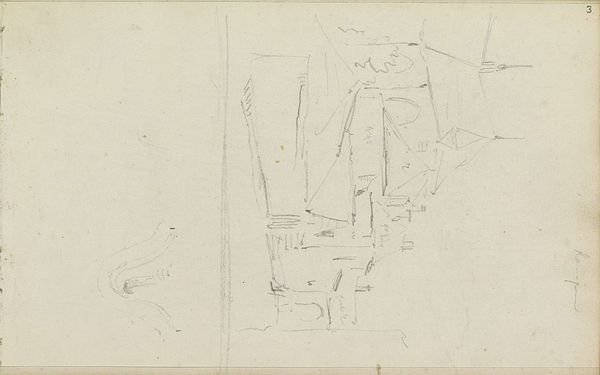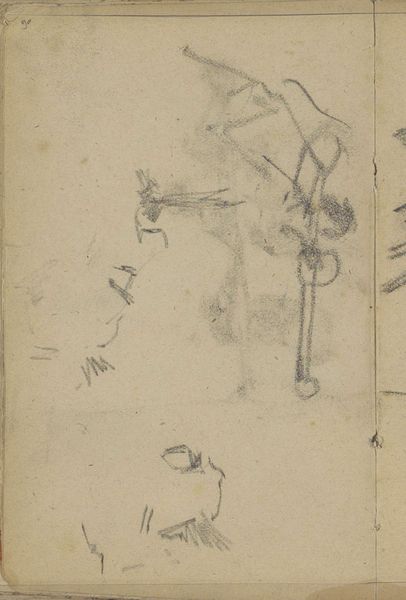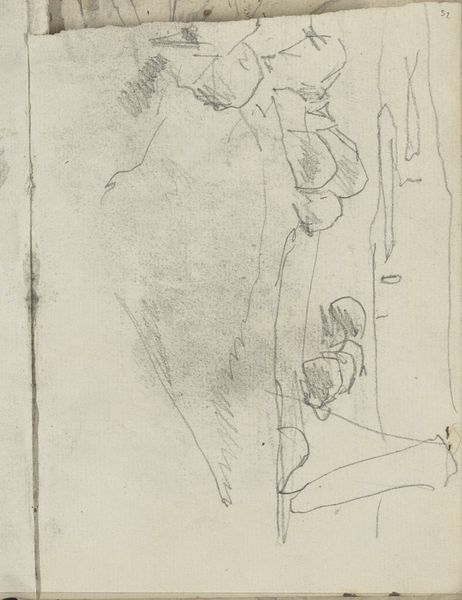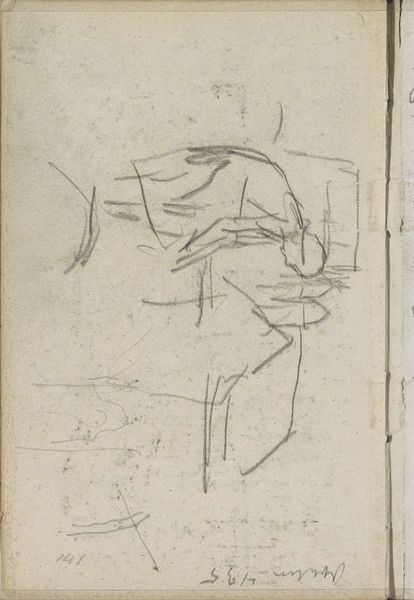
Topgevels en een architectonisch element met voluten 1880 - 1882
0:00
0:00
Copyright: Rijks Museum: Open Domain
Curator: I’m struck by the quiet stillness of this sketch. Breitner’s “Topgevels en een architectonisch element met voluten,” made between 1880 and 1882, gives us a glimpse into the architectural character of the city through his eyes. The volutes themselves—those spiraling ornaments—speak of classical ideals embedded within the urban landscape. Editor: Immediately, I see process. The quick, searching pencil lines across the aged paper show us not a finished product, but the active labor of seeing. Look how the facade almost dissolves into abstract strokes. Curator: The use of pencil on paper emphasizes a direct, almost intimate encounter with the subject. It is very typical of his cityscapes. Consider, though, the architectural element depicted. The volutes suggest a connection to tradition, referencing a lineage of artistic and cultural values linked to this structure. The choice to focus on it carries meaning, it becomes symbolic. Editor: Agreed, but it’s also a pragmatic choice, isn’t it? Ornament like this also represents skilled labor, the craft of stone carving that would’ve been part of building construction in that era. You’re highlighting that object because of the craft embedded into the cityscape, which connects this piece to broader economic and class structures of the city itself. Curator: Indeed, and thinking about the period—late 19th century—this element echoes a need to embody progress through a romanticized, perhaps selective, historic lens. The medium and chosen object interact to evoke that moment of a modernizing Amsterdam reflecting upon its heritage. Editor: And a heritage being actively built! Breitner, with these marks, participates in documenting the physical transformations wrought by industry and economy in his own medium. The sketch is not merely a static record but evidence of dynamic making – Breitner creating as the city itself is being re-created. Curator: So, the quick and economic nature of pencil allows Breitner the capacity to engage and quickly reflect the spirit of progress through the traditional images that continue to give that sense of forward drive symbolic context and a romantic depth. Editor: Exactly! It leaves me appreciating the unseen hands and the consumed materials – pencil lead and paper, architectural stone – behind every aesthetic choice.
Comments
No comments
Be the first to comment and join the conversation on the ultimate creative platform.
